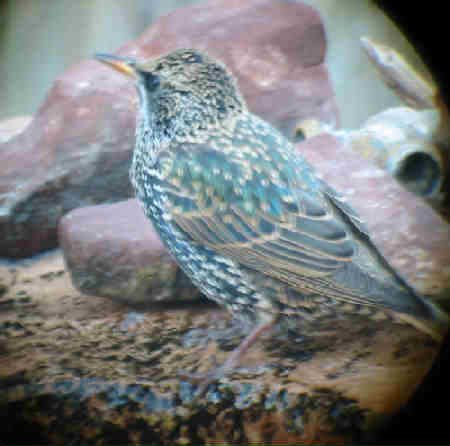Please Help Pets with a Small Donation of One Dollar
Beginning in New York,
Starlings have spread all over America
Starlings have short tails, plump bodies and a yellow beak.
They are good songbirds and have the ability to mimic.
In 1890, 100 of the birds were brought to New York City.
They thrived so successfully that starlings are now found
throughout North America.
The adult male and female starling attain a length of about
about 8.5 in. Juvenile starlings are a uniform mousy brown in
color. In late summer and fall, they molt into an essentially
adult plumage, glossy green and purple almost concealed by large
buffy-white spots at the tips of all the body feathers.
Sunlight on their plumage makes a rainbow of colors.
Males and females are similar in plumage color, but adult males have
long hackle feathers on the breast; these are shorter in females
and even shorter in yearling starlings.
A spot at the base of the bill provides the only color difference
between the genders-bluish in males, reddish in females.
Nests are poorly constructed out of grass and twigs in the hollows
of trees or crevices of buildings, they will use bird boxes, or
often pirate other nests driving the birds away. 4 to 6 whitish
or pale blue unmarked eggs are laid.
The song of the starling is squeaky notes, clear whistles, and
imitations of other birds.
Starlings feed on beetles, grasshoppers and other insects, plus
fruits and grain.
Picture Starling

Starlings belong to the order Passeriformes.
Types of Starlings include:
Crested Myna
European Starling
See all Perching Birds